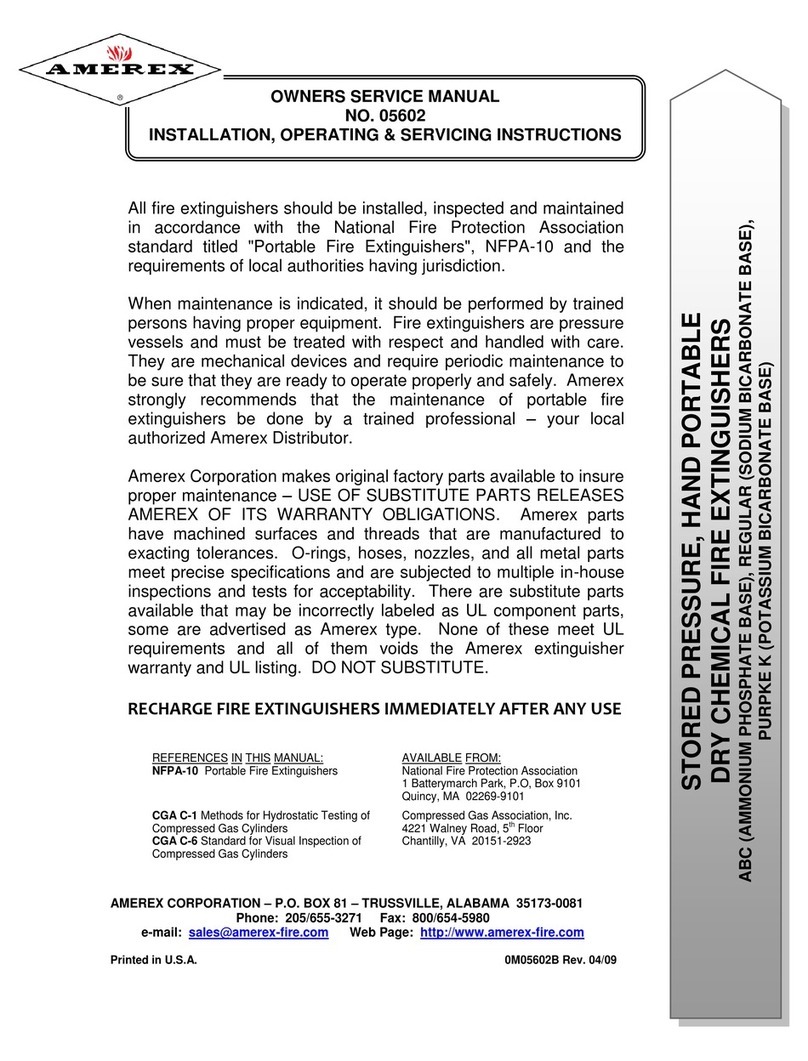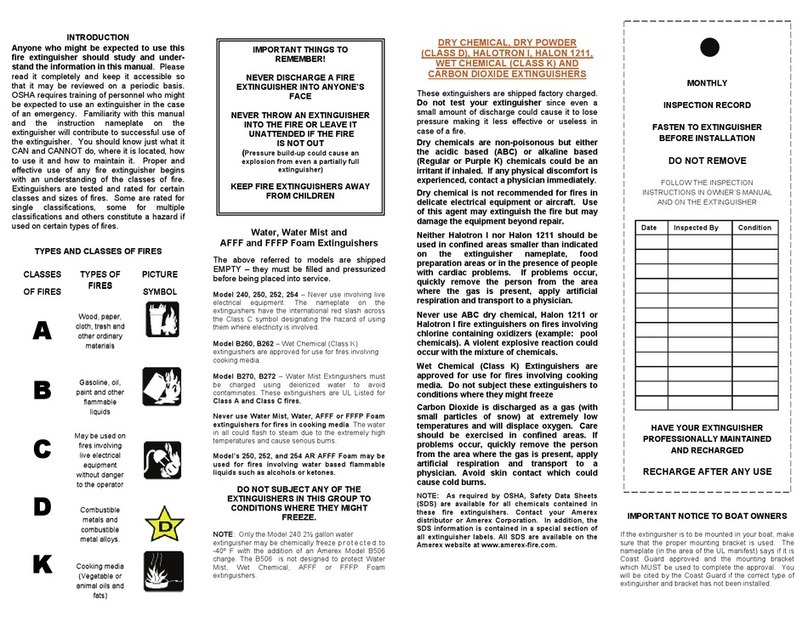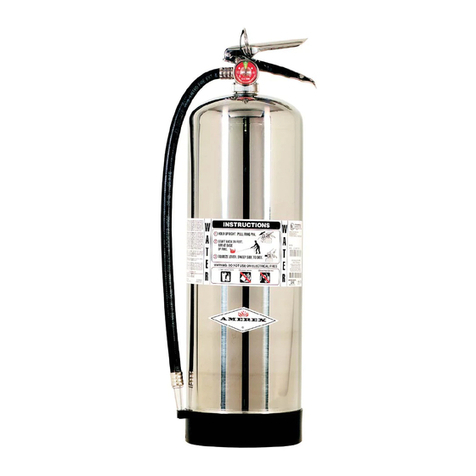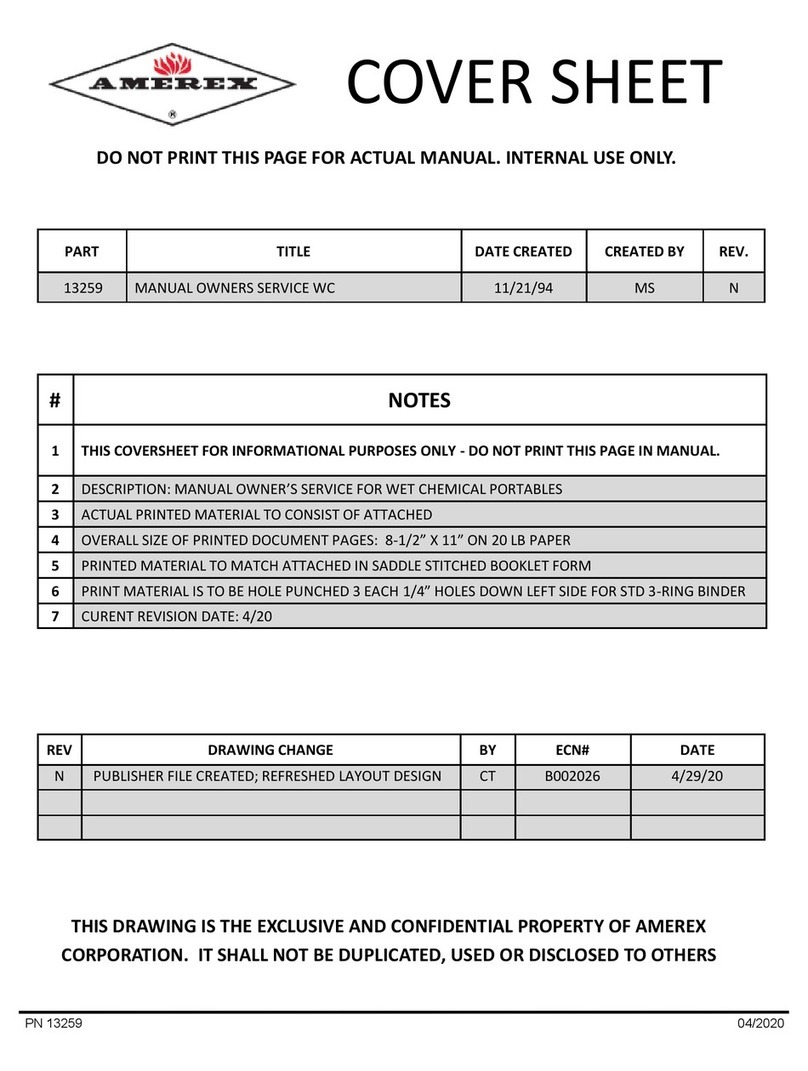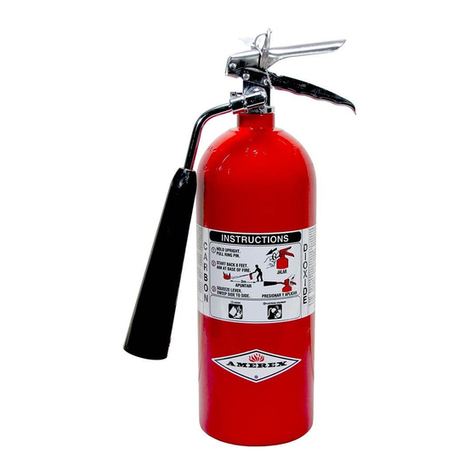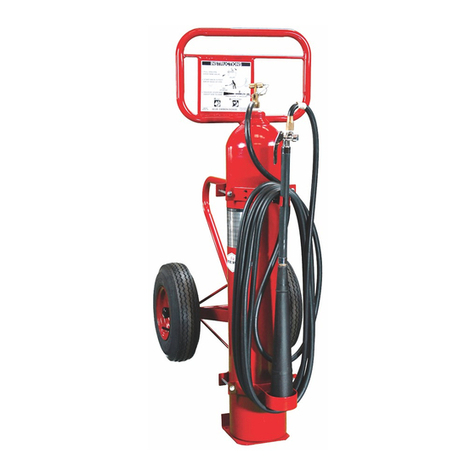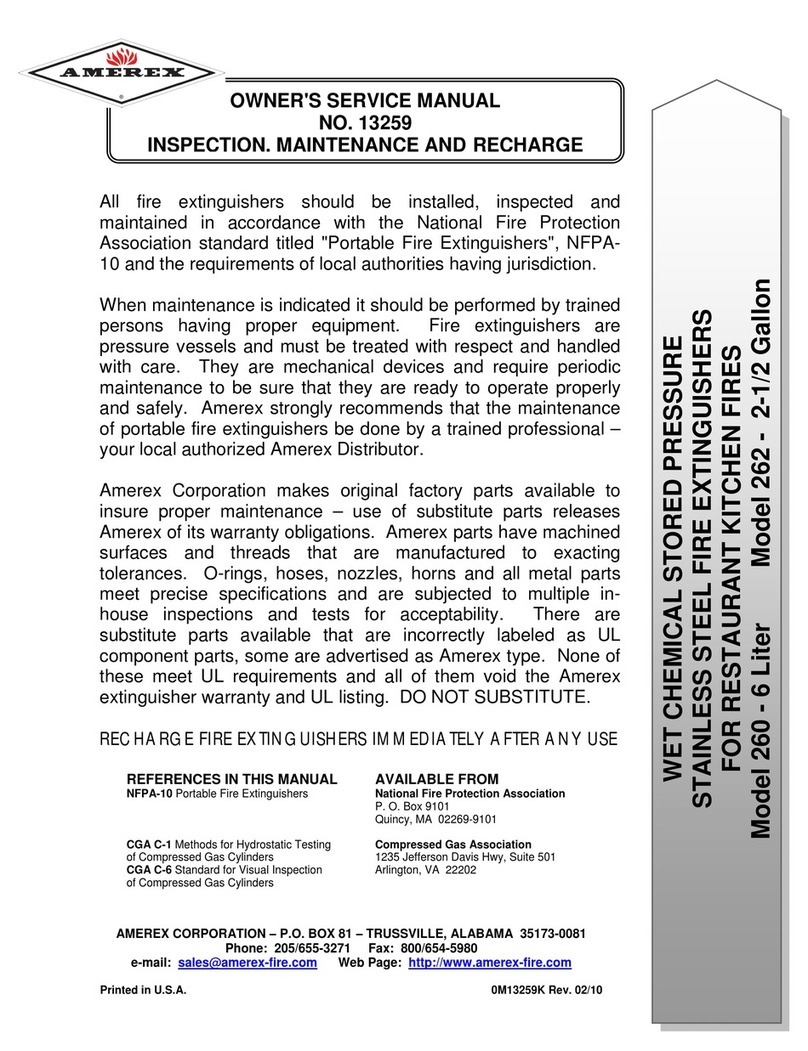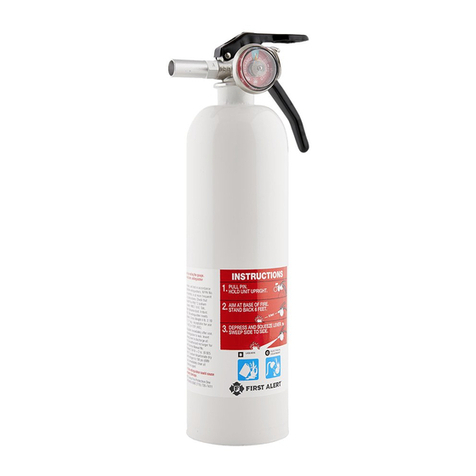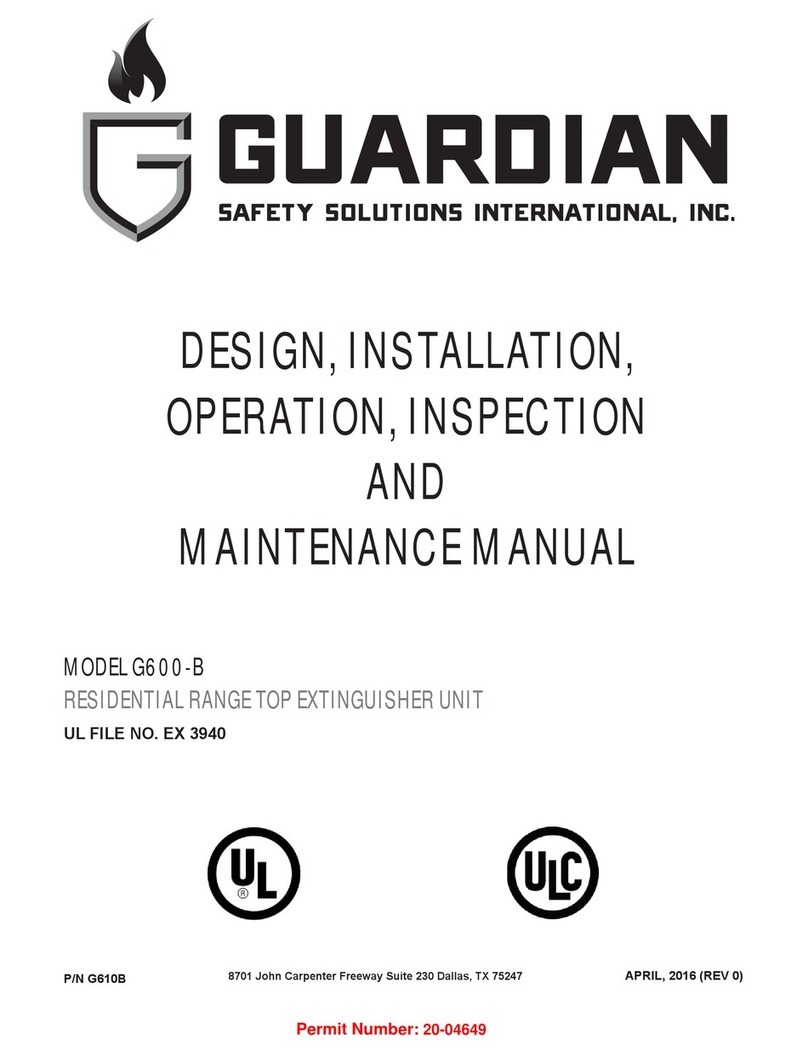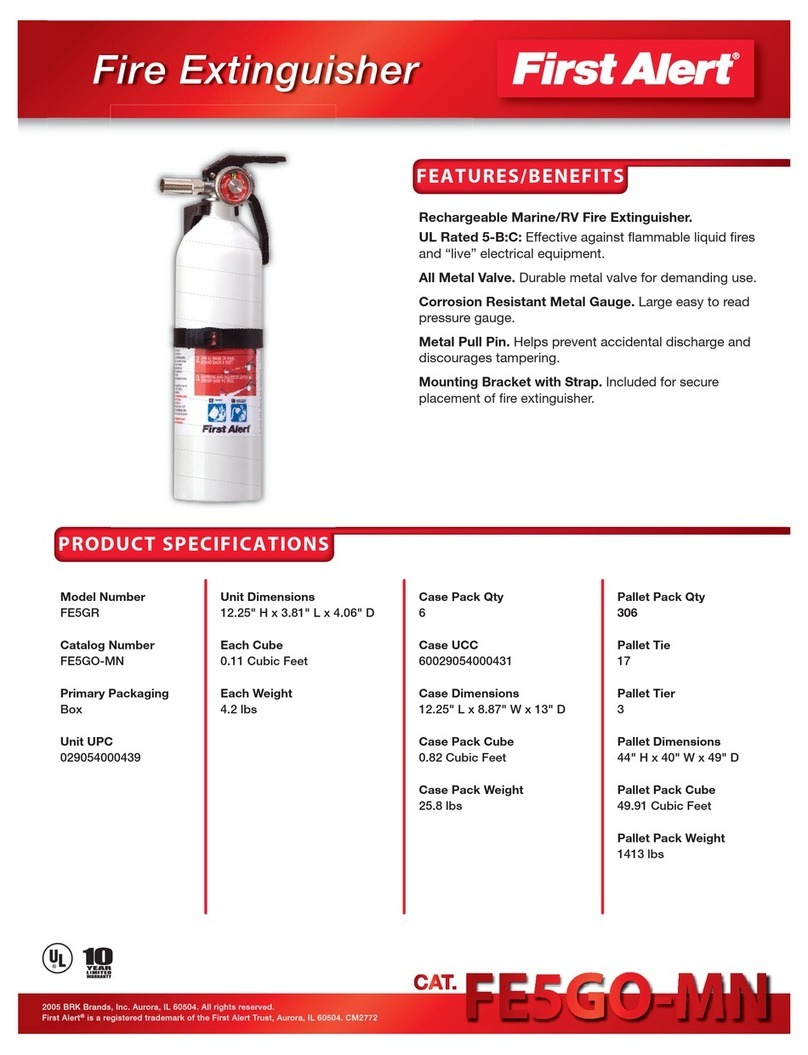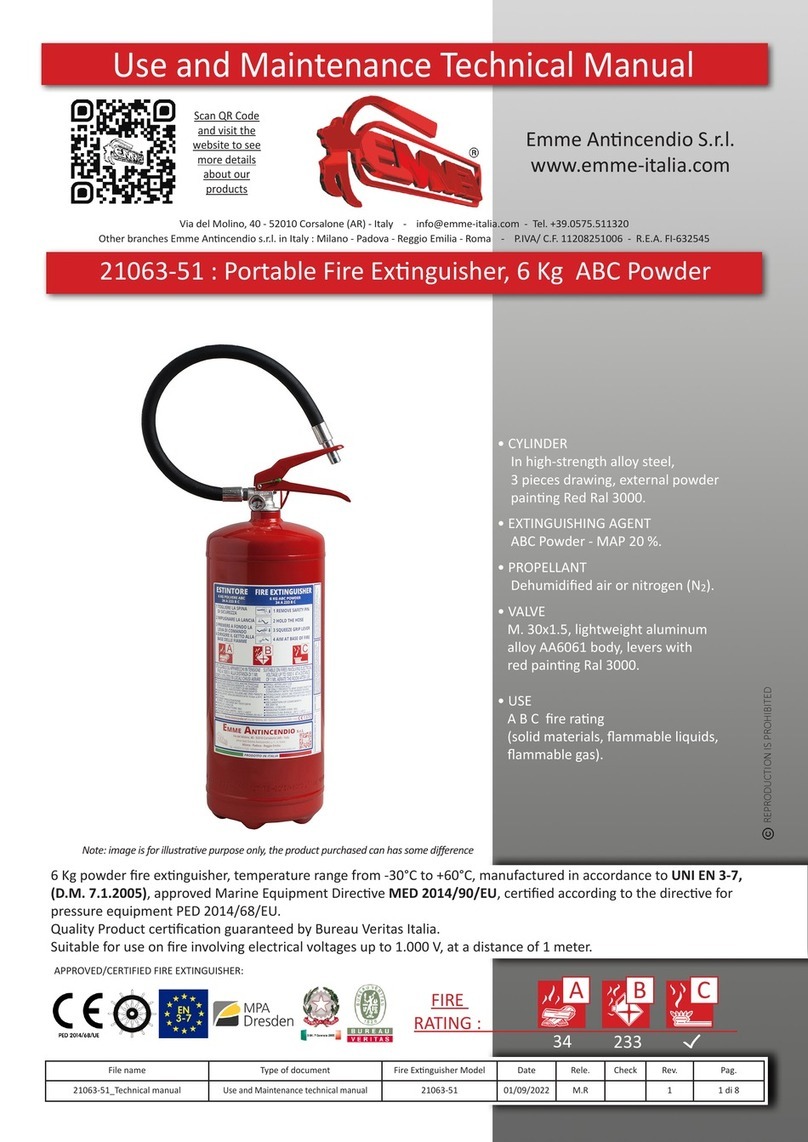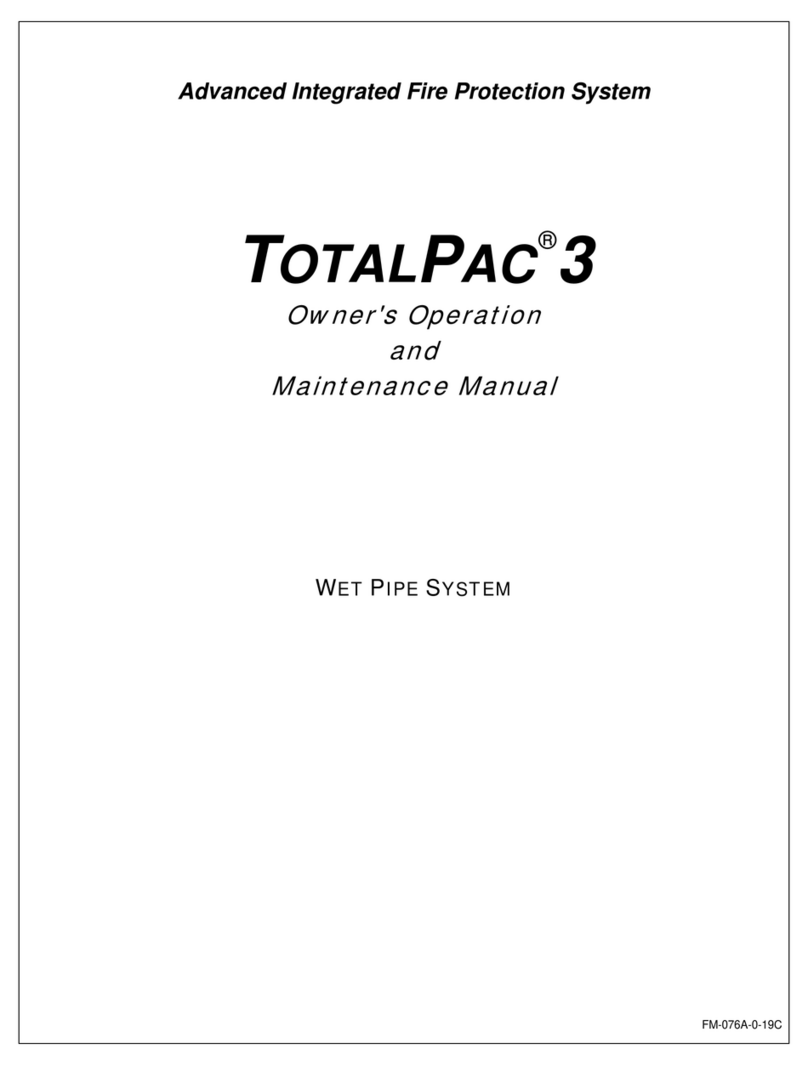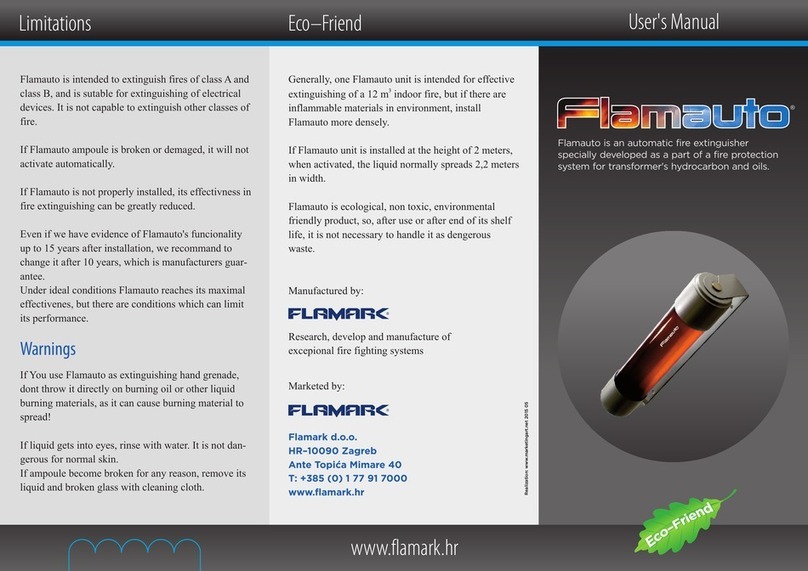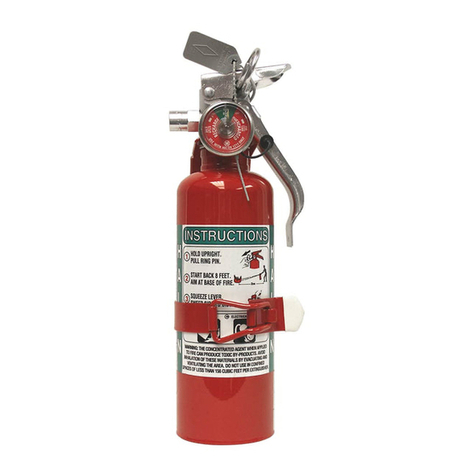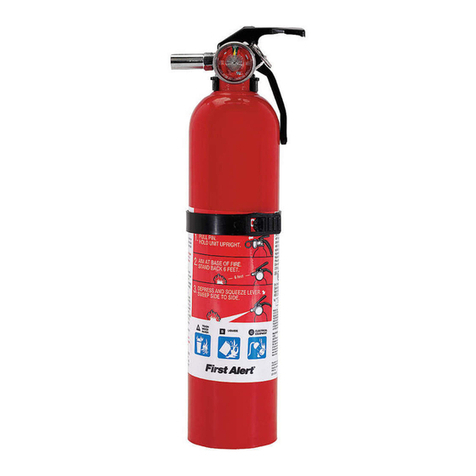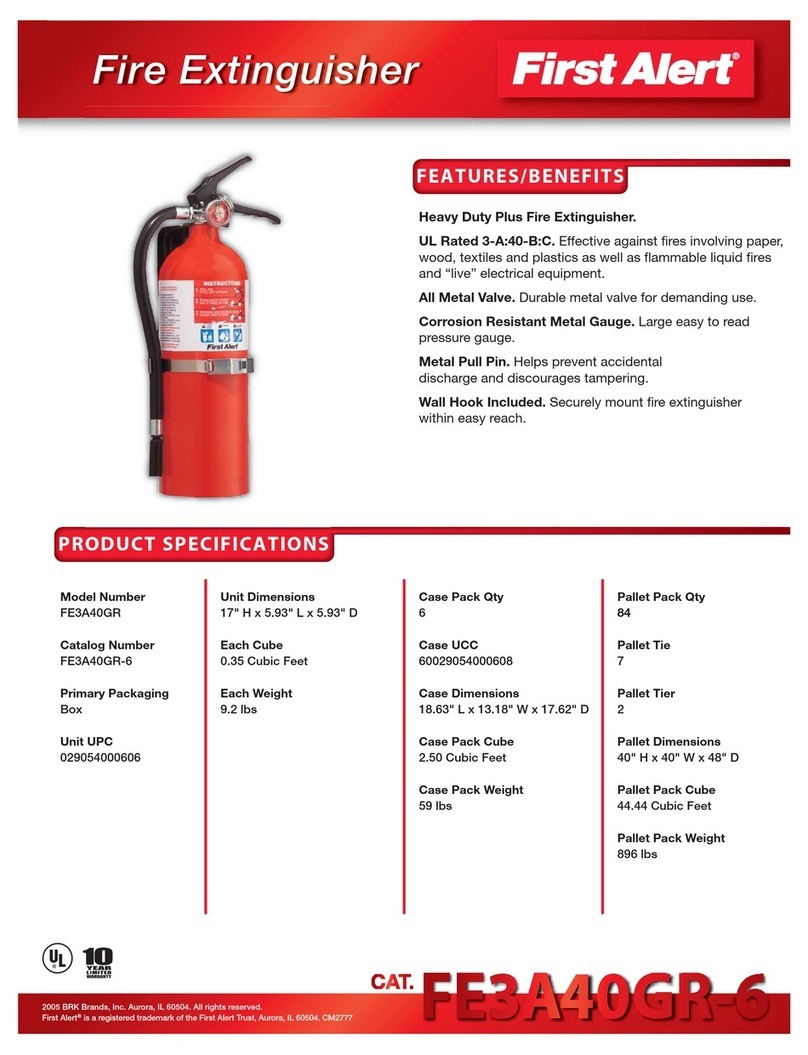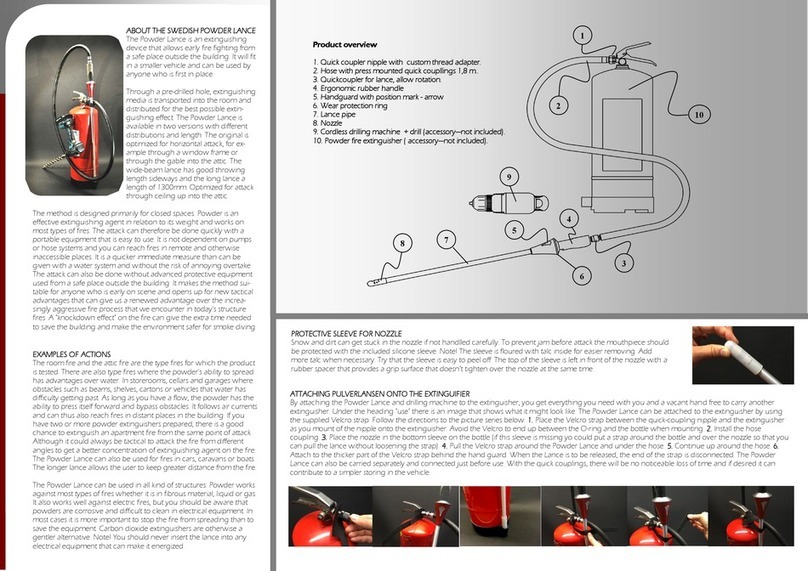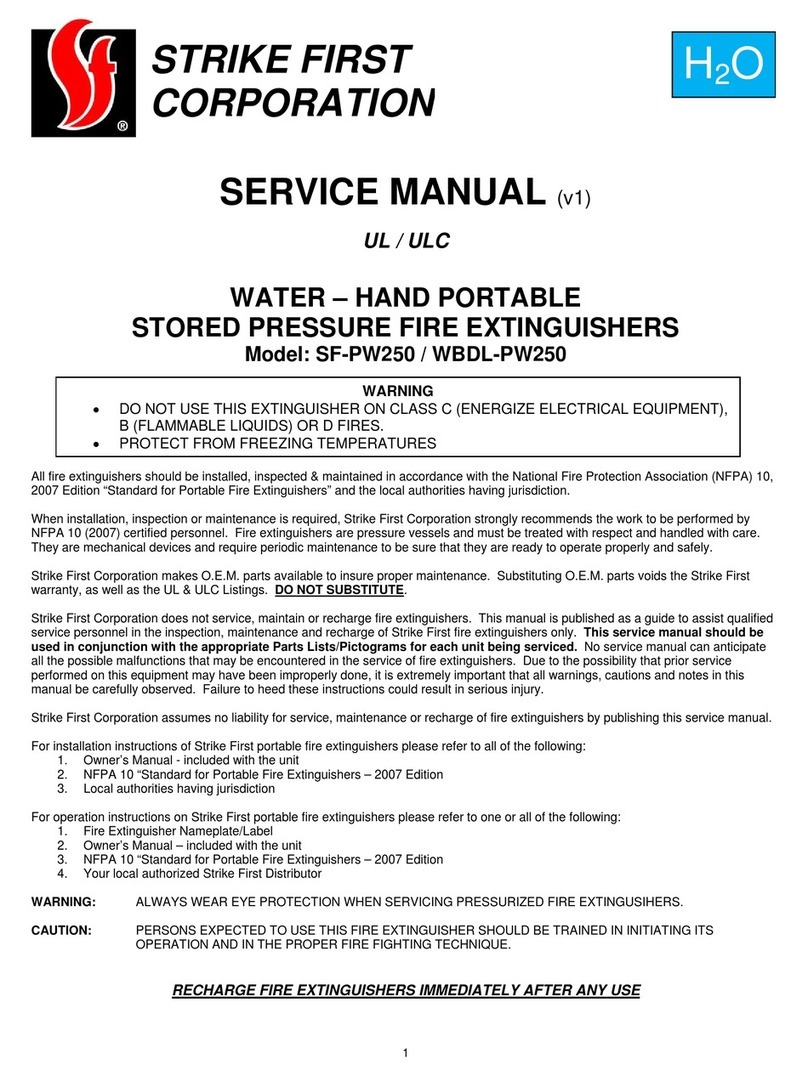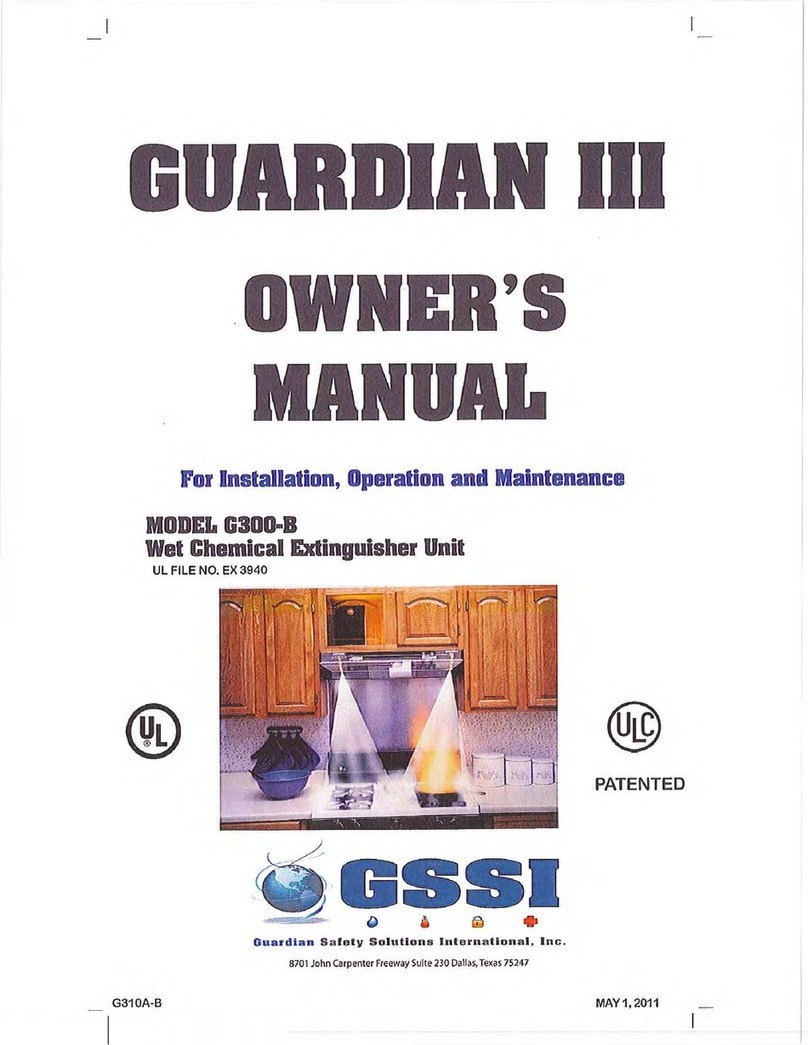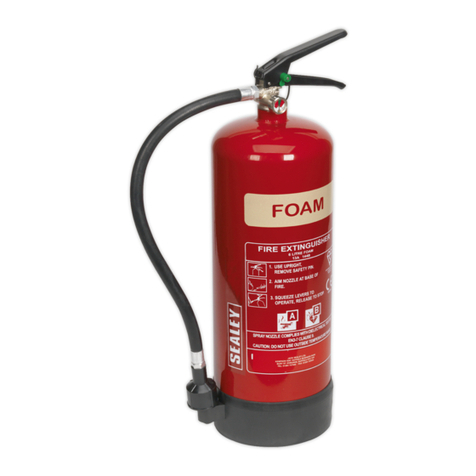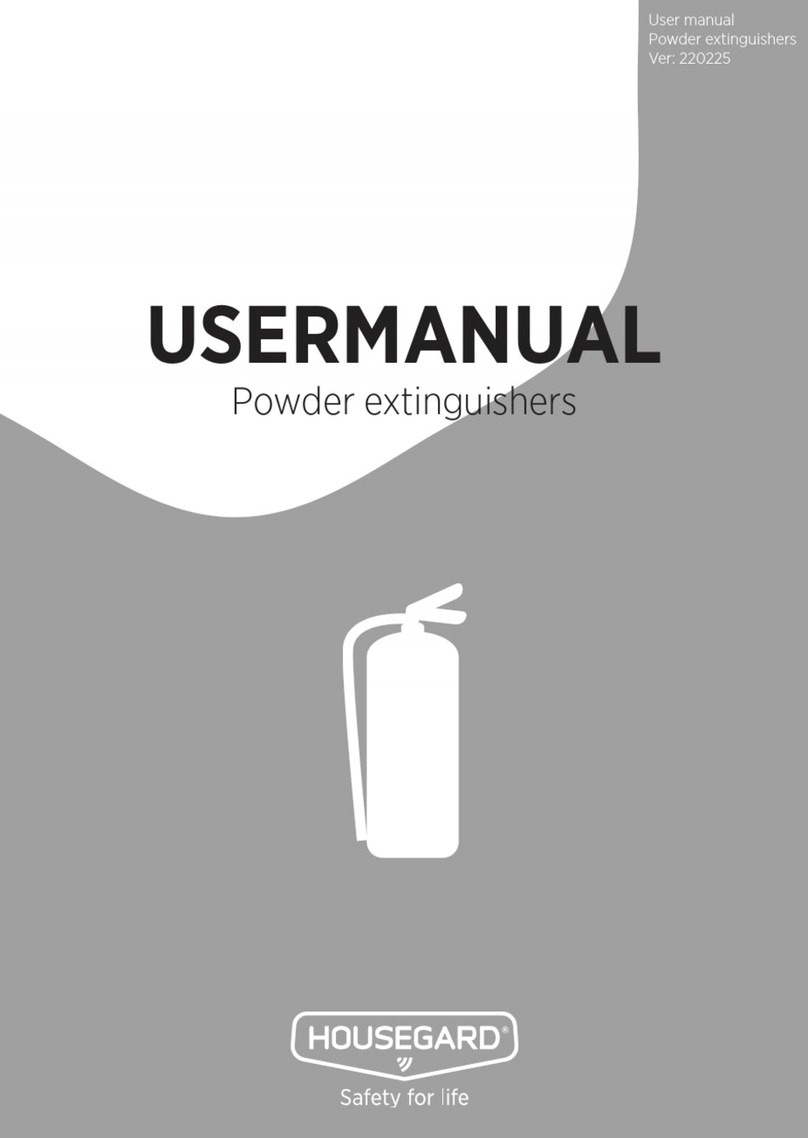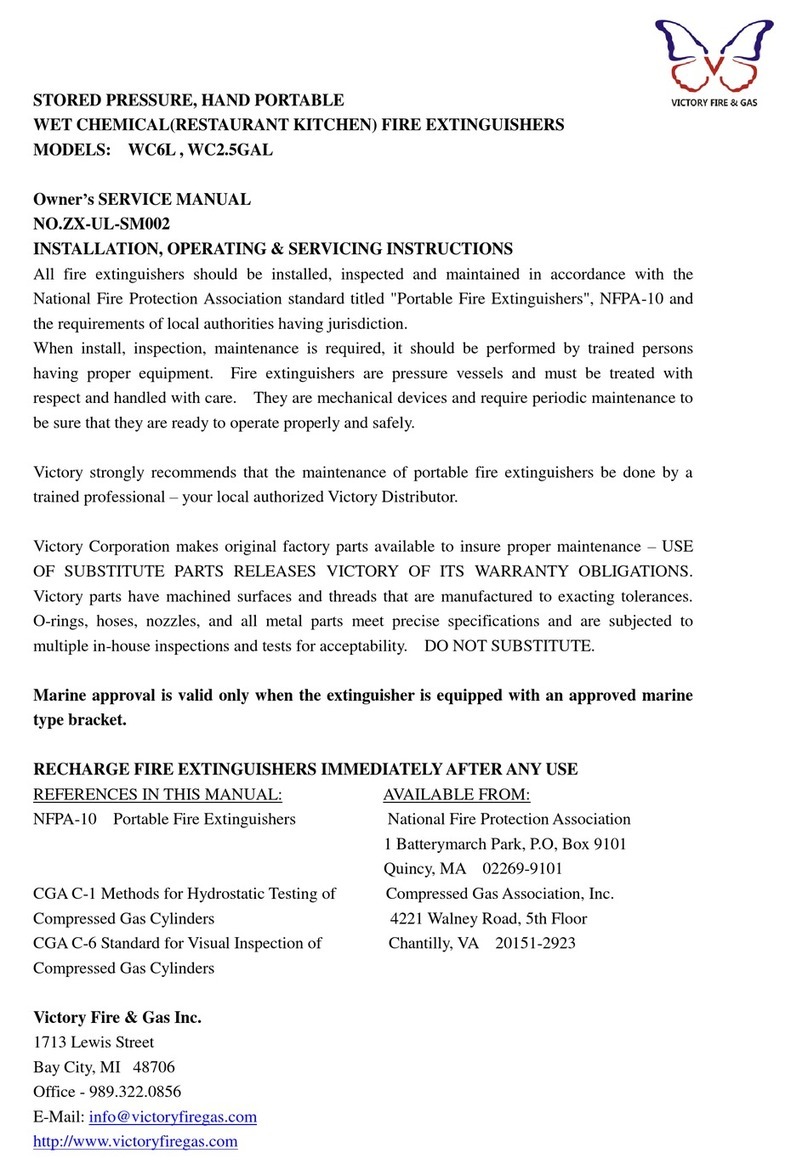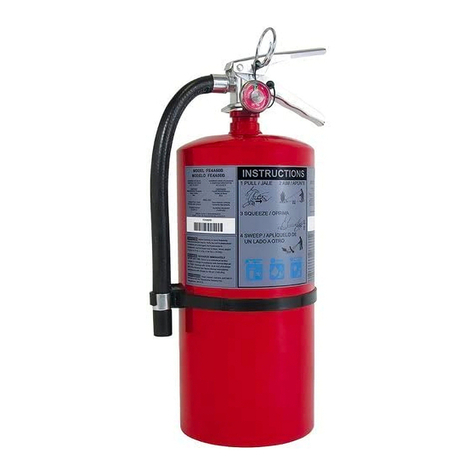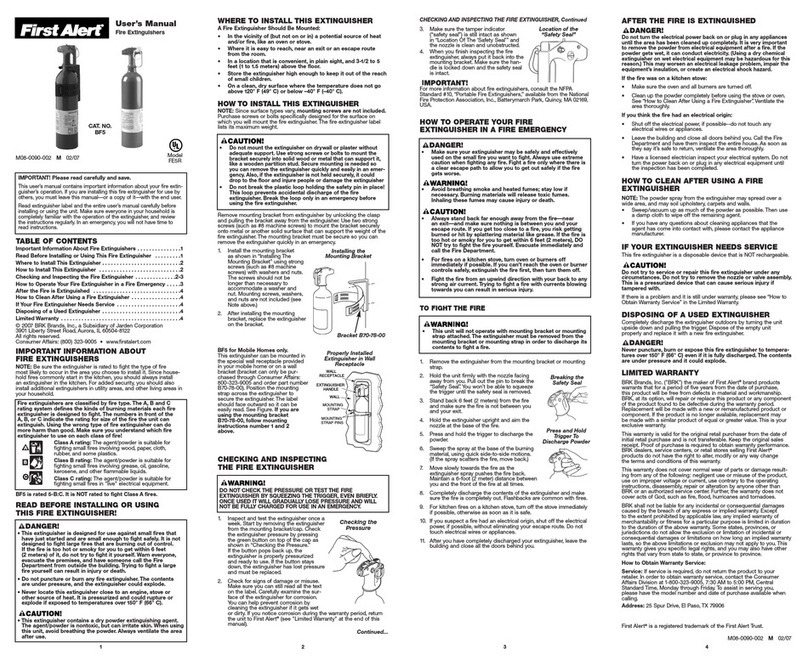
THIS MANUAL IS ATTACHED TO EVERY NEW EXTINGUISHER OF THIS TYPE, SHIPPED FROM THE
FACTORY. IT CONTAINS VALUABLE INFORMATION WHICH SHOULD BE STUDIED BY EVERYONE
WHO WILL OPERATE OR SERVICE THE EXTINGUISHER. IT SHOULD BE KEPT IN A CONVENIENT
LOCATION FOR EASY REFERENCE.
AMEREX CORPORATION DOES NOT SERVICE, MAINTAIN OR RECHARGE FIRE EXTINGUISHERS.
THIS MANUAL IS PUBLISHED AS A GUIDE TO ASSIST QUALIFIED SERVICE PERSONNEL IN THE
INSPECTION, MAINTENANCE AND RECHARGE OF AMEREX FIRE EXTINGUISHERS ONLY. NO
INSTRUCTION MANUAL CAN ANTICIPATE ALL POSSIBLE MALFUNCTIONS THAT MAY BE
ENCOUNTERED IN THE SERVICE OF FIRE EXTINGUISHERS. DUE TO THE POSSIBILITY THAT
PRIOR SERVICE PERFORMED ON THIS EQUIPMENT MAY HAVE BEEN IMPROPERLY DONE, IT IS
EXTREMELY IMPORTANT THAT ALL WARNINGS, CAUTIONS AND Notes IN THIS MANUAL BE
CAREFULLY OBSERVED.FAILURE TO HEED THESE INSTRUCTIONS COULD RESULT IN SERIOUS
INJURY.
AMEREX ASSUMES NO LIABILITY FOR SERVICE, MAINTENANCE OR RECHARGE OF FIRE
EXTINGUISHERS BY PUBLISHING THIS MANUAL.
INTRODUCTION
The Amerex Models 488 (ABC), 489 (REGULAR) & 490 (PURPLE K) WHEELED and Models 476 (ABC), 477
(REGULAR)and478(PURPLEK)STOREDPRESSUREDRYCHEMICALfireextinguisheraredesignedtoprovidelarge
volumes of dry chemical fire fighting agent for high hazard industrial applications. Wheeled extinguishers can be easily
transported and operated by one person on smooth rolling 16" wheels. The cage type carriage configuration provides
protection for the operating valve, cylinder and hose assembly.
MaximumprotectionfromseverecorrosiveenvironmentisaffordedbytheAmerex“Ultra”metalpreparationandpaint
finish.Theoperatingvalve,handle,gaugeguard,fillcap,hosecouplingsandballtypeshut-offarebrass,orbrass,chrome
plated for years of trouble free use. These Models carry an AMEREX warranty of SIX YEARS -see full wording of the
warranty below.
Fieldrecharging is possible utilizingmaintenance/recharge equipment available throughyour Amerex Distributor. To
provide optimum extinguisher reliability, recharging should be performed by persons trained in fire extinguisher
maintenanceandservicing.Thismanualshouldbeusedasaguideforinstalling,operatingandservicingthisextinguisher.
THE BEST PLACE TO HAVE YOUR EXTINGUISHER SERVICED AND RECHARGED IS YOUR “AUTHORIZED
AMEREX DISTRIBUTOR” WHO HAS THE PROFESSIONAL EXPERIENCE AND EQUIPMENT TO DO IT PROPERLY.
SIX YEAR LIMITED WARRANTY
Amerex warrants its fire extinguishers to be free from defects in material and workmanship for a period of SIX (6)
YEARS from the date of purchase. During the warranty period, any such defects will be repaired or the defective
extinguisher replaced IF THE ORIGINAL GREY LOCKWIRE SEAL IS INTACT AND/OR IF ONLY FACTORY RE-
PLACEMENT PARTS AND RECOMMENDED SERVICE EQUIPMENT HAVE BEEN USED TO SERVICE THE
EXTINGUISHER. This warranty does not cover defects resulting from modification, alteration, misuse, exposure to
unusually corrosive conditions nor improper installation or maintenance. ALL IMPLIED WARRANTIES, INCLUDING,
BUT NOT LIMITED TO, WARRANTIES OF FITNESS FOR PURPOSE AND MERCHANTABILITY, ARE LIMITED
TO THE TIME PERIODS AS STATED ABOVE. IN NO EVENT SHALL AMEREX CORP. BE LIABLE FOR INCIDEN-
TAL OR CONSEQUENTIAL DAMAGES. Some states do not allow limitations on how long an implied warranty lasts
or the exclusion or limitation of incidental or consequential damages, so that the above limitations or exclusions may
not apply to you. Amerex Corp. neither assumes nor authorizes any representative or other person to assume for it
any obligation or liability other than expressly set forth herein. This warranty gives you specific legal rights, and you
may also have other rights which vary from state to state. To obtain performance of the obligation of this warranty,
write to Amerex Corp., P. O. Box 81, Trussville, AL 35173-0081 for instructions.
2.2.
2.2.
2.
